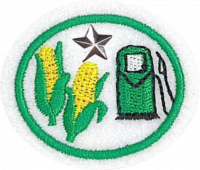Difference between revisions of "AY Honors/Alternative Fuels - Advanced/Answer Key/es"
From Pathfinder Wiki
< AY Honors | Alternative Fuels - AdvancedAY Honors/Alternative Fuels - Advanced/Answer Key/es
(Created page with "</noinclude> <!-- 3. Describir el proceso de excavación petrolera en mar abierto. -->") |
(Updating to match new version of source page) |
||
| (5 intermediate revisions by 2 users not shown) | |||
| Line 1: | Line 1: | ||
{{HonorSubpage}} | {{HonorSubpage}} | ||
| − | + | ||
<section begin="Body" /> | <section begin="Body" /> | ||
{{ansreq|page={{#titleparts:{{PAGENAME}}|2|1}}|num=1}} | {{ansreq|page={{#titleparts:{{PAGENAME}}|2|1}}|num=1}} | ||
| Line 32: | Line 32: | ||
{{CloseReq}} <!-- 4 --> | {{CloseReq}} <!-- 4 --> | ||
{{ansreq|page={{#titleparts:{{PAGENAME}}|2|1}}|num=5}} | {{ansreq|page={{#titleparts:{{PAGENAME}}|2|1}}|num=5}} | ||
| − | <noinclude> | + | <noinclude></noinclude> |
| − | </noinclude> | + | <!-- 5. Dibujar un diagrama que explica cómo gas natural es extraído y procesado para ser utilizado. --> |
| − | <!-- 5. | ||
| − | |||
{{clear}} | {{clear}} | ||
| Line 46: | Line 44: | ||
{{CloseReq}} <!-- 5 --> | {{CloseReq}} <!-- 5 --> | ||
{{ansreq|page={{#titleparts:{{PAGENAME}}|2|1}}|num=6}} | {{ansreq|page={{#titleparts:{{PAGENAME}}|2|1}}|num=6}} | ||
| − | <noinclude> | + | <noinclude></noinclude> |
| − | </noinclude> | + | <!-- 6. Explicar cómo se puede utilizar gas natural para: --> |
| − | <!-- 6. | + | <noinclude></noinclude> |
| − | <noinclude | ||
| − | |||
{{ansreq|page={{#titleparts:{{PAGENAME}}|2|1}}|num=6a}} | {{ansreq|page={{#titleparts:{{PAGENAME}}|2|1}}|num=6a}} | ||
<noinclude></noinclude> | <noinclude></noinclude> | ||
| Line 70: | Line 66: | ||
{{clear}} | {{clear}} | ||
| − | + | <noinclude></noinclude> | |
| − | <noinclude | ||
| − | |||
{{CloseReq}} <!-- 6c --> | {{CloseReq}} <!-- 6c --> | ||
{{ansreq|page={{#titleparts:{{PAGENAME}}|2|1}}|num=6d}} <!--T:18--> | {{ansreq|page={{#titleparts:{{PAGENAME}}|2|1}}|num=6d}} <!--T:18--> | ||
| − | <noinclude> | + | <noinclude></noinclude> |
| − | </noinclude | ||
| − | |||
| − | |||
| − | + | <noinclude></noinclude> | |
| − | <noinclude | ||
| − | |||
{{CloseReq}} <!-- 6d --> | {{CloseReq}} <!-- 6d --> | ||
{{CloseReq}} <!-- 6 --> | {{CloseReq}} <!-- 6 --> | ||
{{ansreq|page={{#titleparts:{{PAGENAME}}|2|1}}|num=7}} | {{ansreq|page={{#titleparts:{{PAGENAME}}|2|1}}|num=7}} | ||
| − | <noinclude> | + | <noinclude></noinclude> |
| − | </noinclude> | + | <!-- 7. ¿Gas natural se utiliza para hacer cuáles productos? Explicar el proceso en por lo menos dos de las respuestas. --> |
| − | <!-- 7. | ||
| − | |||
| − | + | {{clear}} | |
| − | |||
| − | |||
| − | + | {{clear}} | |
| − | |||
| − | |||
| − | + | {{clear}} | |
| − | |||
| − | |||
| − | |||
| − | |||
| − | + | <noinclude></noinclude> | |
| − | <noinclude | ||
| − | |||
{{CloseReq}} <!-- 7 --> | {{CloseReq}} <!-- 7 --> | ||
{{ansreq|page={{#titleparts:{{PAGENAME}}|2|1}}|num=8}} | {{ansreq|page={{#titleparts:{{PAGENAME}}|2|1}}|num=8}} | ||
| − | <noinclude> | + | <noinclude></noinclude> |
| − | </noinclude> | + | <!-- 8. ¿Cómo se produce etanol? --> |
| − | <!-- 8. | ||
| − | |||
| − | + | {{clear}} | |
| − | |||
| − | |||
| − | |||
| − | |||
| − | + | {{clear}} | |
| − | |||
| − | |||
| − | |||
| − | |||
| − | |||
| − | + | <noinclude></noinclude> | |
| − | <noinclude | ||
| − | |||
{{CloseReq}} <!-- 8 --> | {{CloseReq}} <!-- 8 --> | ||
{{ansreq|page={{#titleparts:{{PAGENAME}}|2|1}}|num=9}} | {{ansreq|page={{#titleparts:{{PAGENAME}}|2|1}}|num=9}} | ||
| − | <noinclude> | + | <noinclude></noinclude> |
| − | </noinclude> | + | <!-- 9. Discutir en un grupo algunos de los efectos al entorno con respecto al uso de combustibles alternativos. --> |
| − | <!-- 9. | ||
| − | |||
| − | |||
| + | {{clear}} | ||
| − | + | <noinclude></noinclude> | |
| − | |||
| − | |||
| − | |||
| − | |||
| − | <noinclude | ||
| − | |||
{{CloseReq}} <!-- 9 --> | {{CloseReq}} <!-- 9 --> | ||
| − | <noinclude> | + | <noinclude></noinclude> |
| − | </noinclude> | + | ==Referencias== |
| − | == | + | [[Category:Adventist Youth Honors Answer Book/es]] |
| − | [[Category:Adventist Youth Honors Answer Book | + | <noinclude></noinclude> |
| − | <noinclude | ||
| − | |||
{{CloseHonorPage}} | {{CloseHonorPage}} | ||
Latest revision as of 14:49, 13 August 2021
Combustibles alternativos - Avanzado
Nivel de destreza
3
Año
2014
Version
16.11.2024
Autoridad de aprobación
Asociación General
1
Tener la especialidad de Combustibles alternativos.
Para consejos e instrucciones, véase Combustibles alternativos.
2
Describir el proceso de fracturación hidráulica.
3
Describir el proceso de excavación petrolera en mar abierto.
4
¿Cuáles son algunas de las preocupaciones de seguridad de excavación petrolera en mar abierto?
5
Dibujar un diagrama que explica cómo gas natural es extraído y procesado para ser utilizado.
6
Explicar cómo se puede utilizar gas natural para:
6a
Producir hidrógeno
6b
Generar energía
6c
Transporte
6d
Una fuente de energía
7
¿Gas natural se utiliza para hacer cuáles productos? Explicar el proceso en por lo menos dos de las respuestas.
8
¿Cómo se produce etanol?
9
Discutir en un grupo algunos de los efectos al entorno con respecto al uso de combustibles alternativos.


